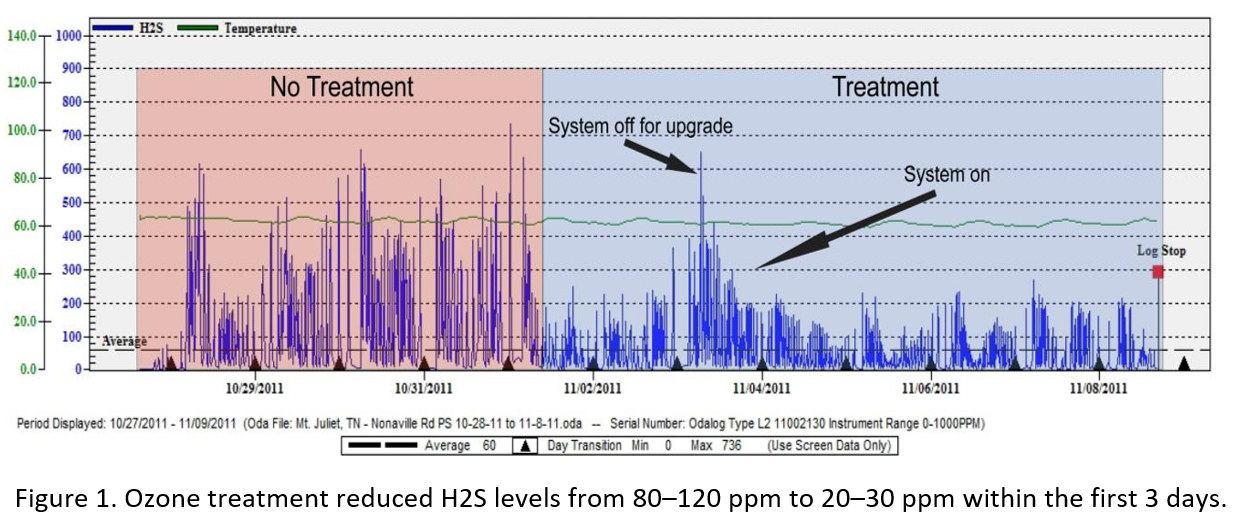Water Treatment
Sustainable odour and corrosion prevention in wastewater systems 2nd July 2018
By Michael Smith
Ozone and oxygen quickly and effectively remove the H2S leading to odour and corrosion in collection systems. We look at ozone
 Photo.png) Ozone and oxygen quickly and effectively remove the H2S leading to odour and corrosion in collection systems. We look at ozone technology, an ultimate solution for sustainable, green wastewater treatment.
Ozone and oxygen quickly and effectively remove the H2S leading to odour and corrosion in collection systems. We look at ozone technology, an ultimate solution for sustainable, green wastewater treatment.
Odour and corrosion
A major contributor to odour and corrosion in wastewater collection systems is hydrogen sulfide (H2S) and associated compounds, which arise following a growth of sulfate reducing bacteria in anaerobic conditions. As well as having environmental effects, including an extremely unpleasant odour, H2S is a corrosion risk when in contact with moist concrete or metals, in the presence of oxygen.
An ideal solution
Ozone is a naturally-occurring form of atmospheric oxygen – O3. The third oxygen atom makes it a highly reactive molecule, with very high oxidation potential. Ozone can be generated by exciting a flow of oxygen, forcing some ‘normal’ oxygen molecules (O2) to split and combine with others. This is a natural process that can also be applied in wastewater settings, simply using the oxygen in the surrounding air as a source material.
Technical application
Ozone treatment reduces H2S vapour and sulfide levels by oxidizing sulfur-containing organic compounds so that they exist in a form that is no longer malodorous, corrosive or otherwise detrimental to the system and environmental health. These sulfur-containing compounds, particularly H2S, are typically associated with the anaerobic bacteria ‘slime layer’ found in the parts of the system that have low to zero oxygen present at any given time, such as the inner walls of piping.
Ozone in action
Anue Water Technology has designed and manufactures a range of ‘FORSe Series’ systems (pictured above) that use oxygen and ozone for sustainable and cost-effective treatment of odour and corrosion in wastewater collection systems. This involves a proprietary process of direct treatment into the force main, coupled with treatment in the wet well of the lift station. Furthermore, Anue has developed a system that generates ozone on-site, when and where it is needed. The technology simply takes air, separates out the oxygen, and processes it into ozone. The ozone reverts to oxygen when it reacts, so the system is highly sustainable and very efficient.
Several case studies demonstrate the utility and effectiveness of ozone technology, providing interesting insights into the efficacy of this approach.

Conclusions
Oxygen and ozone have been around since the beginning of time … literally. It has only been in the past few years, however, that the injection, monitoring and control technology has become cost-efficient enough for industrial and municipal water treatment professionals to use. Effects can be clearly seen in less than 24 hours, and there are no undesirable side effects.
- Terry PA. Int J Chem Engin 2010; article ID 250235.
Tonya Chandler , Vice President of Sales and Marketing of Anue Water Technologies, 5123 S Royal Atlanta Drive, Tucker, GA 30084, USA
T: +1 760 213 7739
E: info@anuewater.com


